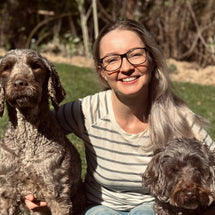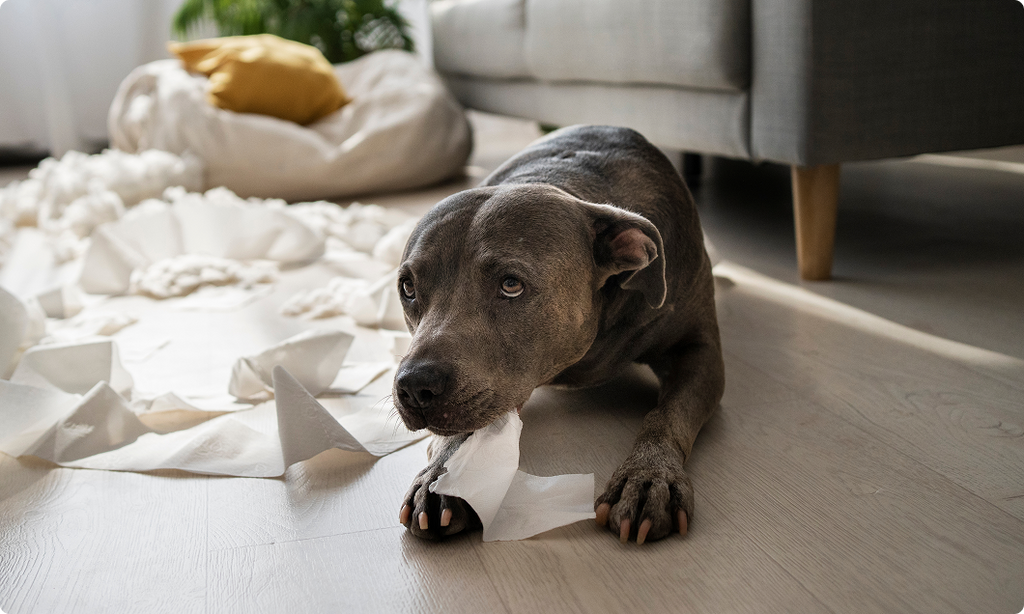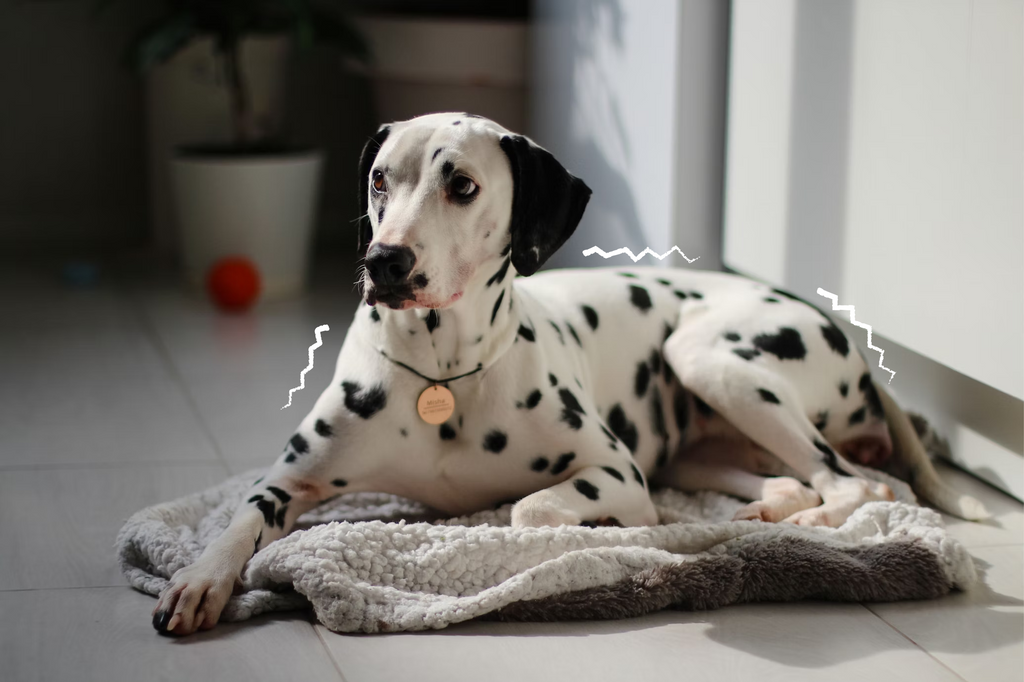A Guide to Safely Boosting Your Dog's Exercise Routine

As the last of the winter chill fades and the Australian landscape bursts into vibrant life, many dog parents are eager to shake off the colder months and re-energise their furry friends. Spring is the perfect season to revisit and revamp your dog's exercise routine, but doing so safely and effectively is key to avoiding injury and ensuring a happy, healthy transition.
After a potentially more sedentary winter, a gradual increase in activity is paramount. Just like humans, dogs need a careful warm-up to prevent muscle strains and sprains. Here’s how you can help your canine companions spring back into shape.
The Gradual Approach: Slow and Steady Wins the Race
Expert Tip: Start with short, more frequent walks and gradually increase the duration and intensity slowly at a rate of less than 10% increase per week over several weeks. Even just an easy 5-minute walk twice a day might be a good starting point for a less active or overweight dog, slowly extending by 5 minutes as their stamina improves.
Resist the urge to immediately jump into long, strenuous activities. Your dog's fitness level may have dipped over winter, and a sudden increase in exercise can lead to:
-
Heat stress: While spring is milder, midday sun can still be intense, particularly in northern Australia.
-
Muscle soreness and stiffness: Similar to humans, dogs can experience Delayed Onset Muscle Soreness (DOMS).
-
Joint strain: This is especially true for older dogs or those with pre-existing conditions.
-
Paw pad injuries: Unconditioned paws are more susceptible to cuts, blisters, and burns from hot surfaces.
Warning! Never exercise your dog immediately before or after they’ve eaten a meal, as this can cause bloat, also known as Gastric Dilation and Volvulus (GDV). This is an especially high risk for deep-chested breeds like Golden Retrievers, Dobermans, Wolfhounds or Great Danes.
Exercise checklist

1. Prioritise a vet check-up
Before embarking on any significant increase in exercise, a visit to your local vet is highly recommended for all dogs. Talk to your vet about how to protect your puppy or dog from infectious diseases with vaccinations, and tick paralysis with parasite control.
Health and wellness checkups are particularly important for older dogs or those with known health issues like obesity, arthritis, brachycephalic airway disease, cardiac disease or endocrine conditions such as Cushing’s. Dogs with diagnosed diabetes should not change their exercise regime without strict veterinary oversight. A vet can assess your dog's current health and body condition score and advise on appropriate activity levels.
2. Assess the fitness level and exercise needs of your dog
Different dogs have different exercise requirements. Kelpies, Border Collies, German Short Haired Pointers and other breeds bred for activity need more exercise per day, and can usually handle higher intensity work for short periods.
However, smaller lap-dogs such as Shihtzus, Cavalier King Charles Spaniels and Pugs have a lower exercise requirement, and actually can sometimes have breathing difficulties during physical activity.
Ask your veterinarian about your own individual dog’s requirements and capabilities. Most dogs will need to be walked or have a run around the dog park once or twice a day. Check out our article Helping Overweight Dogs Thrive: A Guide To Achieving Optimal Weight Safely.
3. Check the temperature and protect paws
Before grabbing the lead and heading outside, check the temperature. Heat stroke in dogs can be fatal, and most commonly occurs after exercising in warm temperatures, so exercising early morning or late evening when the temperature is cooler is best.
As the weather warms, so do footpaths and roads. A quick and easy test is the five-second rule: if you can't comfortably hold the palm of your hand on the pavement for five seconds, it's too hot for your dog's paws. Schedule walks for the cooler parts of the day and stick to grassy or dirt paths whenever possible.
4. The Importance of Warm-Up and Cool-Down
-
Warm-Up (5 minutes): Begin with a slow walk or gentle play to get muscles ready.
-
Cool-Down (5 minutes): End with a slow, relaxed walk, allowing their heart rate to return to normal. Gentle stretching of their limbs can also be beneficial.
Gradually lengthening the time for warm-ups and cool-downs will be beneficial for training.
5. Variety is the Spice of Life
Introduce different activities to keep your dog engaged and work various muscle groups. This could include:
-
Hiking local Australian trails (always check national park or council regulations regarding dogs).
-
Swimming (a great low-impact exercise for joints, but ensure safe, dog-friendly locations).
-
Fetch or frisbee in a local park (always check local council rules for off-leash areas).
-
Agility courses (a fun way to challenge both body and mind).
…But not too much variety! Remember to avoid forced exercise activities where it may be hard to monitor or adjust to your dog’s fatigue cues:
-
Avoid running your leashed dog alongside your bike. In NSW, the Road Traffic Authority states that “a bicycle rider must not lead an animal on a leash, including by tethering, while the bicycle is moving”
-
Excessive ball or frisbee throwing can lead some enthusiastic dogs into exhaustion
-
Avoid jogging, running or long walks with a puppy under 12 months of age
6. Watch your dog’s cues

Pay close attention to your dog's body language. If you notice any signs of fatigue, it’s time to stop to rest:
-
Sits or lies down during the walk
-
Lagging behind or generally seems slow or tired
-
Excessive panting
-
Limping
-
Seeking shade
Once rested, you may need to stop walking and return home when they are ready. Rest days are just as important as active days, so give your pup more time to adjust to the new exercise routine.
Signs of heat stroke and hyperthermia to watch out for include:
-
Excessive panting
-
Drooling
-
Either pale gums or injected (red) gums
-
Disorientation, confusion, poor responsiveness, or agitation
-
Collapse and inability to stand
7. Feed a nutritionally complete and balanced diet
Increasing your dog's exercise routine isn't just about walks; it's also about providing the right fuel. Just as an athlete needs proper nutrition, your active dog's diet has the power to support their new energy expenditure and muscle recovery. This includes having plenty of fresh water available at all times!
Expert Tip: Consult your veterinarian before making significant changes to your dog's diet or exercise routine.
Special considerations for certain dogs

Take it easy with brachycephalic breeds (Pugs, Bulldogs, Boxers)
Flat-faced breeds like Pugs and the French bulldogs are highly susceptible to overheating due to their restricted airways. For these dogs, exercise should always be lower in intensity and only in the coolest parts of the day. Opt for a harness instead of a collar to avoid putting pressure on their windpipe.
Be gentle with arthritic senior dogs
Low-impact activities like swimming or walking on soft surfaces (grass, sand) are ideal. Hydrotherapy, often offered at specialised pet rehabilitation centres, is an excellent option.
Keep it cooler for long/thick-coated dog breeds
Dog breeds with thick or double coats, such as Huskies, Malamutes, Samoyeds, Border Collies, and Golden Retrievers, are naturally better suited for cold climates. Their dense fur acts as insulation, trapping heat and making them highly susceptible to overheating, even in milder spring temperatures. This risk is even greater in the northern parts of Australia, where spring can feel like summer due to the higher humidity. Learn more about heatstroke in dogs.
By taking a thoughtful, gradual approach to increasing your dog's exercise routine this spring, you'll be setting them up for a vibrant, active, and healthy season ahead. Get out there and enjoy the beautiful outdoors with your best friend!
References:
-
RSPCA Pet Insurance: How to safely exercise your dog or puppy. https://www.rspcapetinsurance.org.au/pet-care/dog-care/how-to-safely-exercise-dog-or-puppy
-
Heatstroke in Dogs: https://vcahospitals.com/know-your-pet/heat-stroke-in-dogs
-
Animal Referral & Emergency Network: First Aid for a pet with heat stroke https://www.emergencyvet.com.au/for-vets-and-nurses/resource-centre/pet-parent-education-hub/first-aid-for-a-pet-with-heat-stroke.html
-
Brachycephalic in dogs: https://www.petmd.com/dog/conditions/respiratory/brachycephalic-airway-syndrome-dogs
-
Animal Referral & Emergency Network: Animal Hydrotherapy. https://www.emergencyvet.com.au/our-services/Hydrotherapy_for_animals.html





